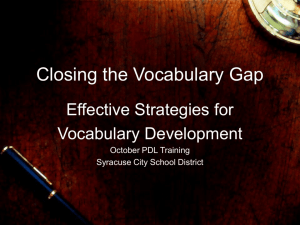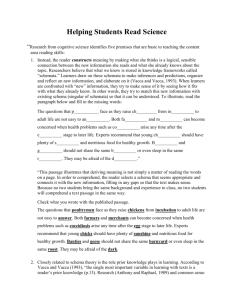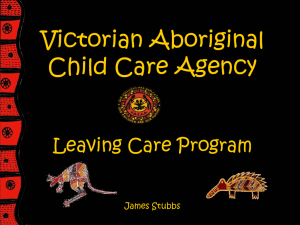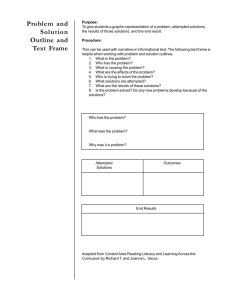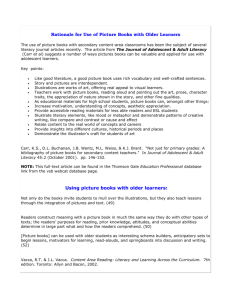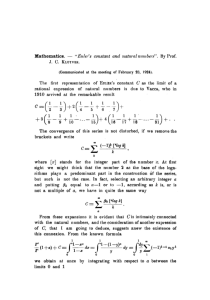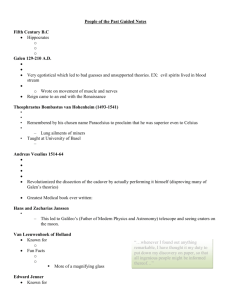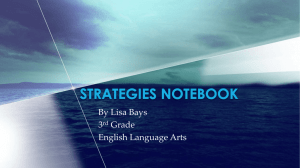Content Area Classroom Success
advertisement
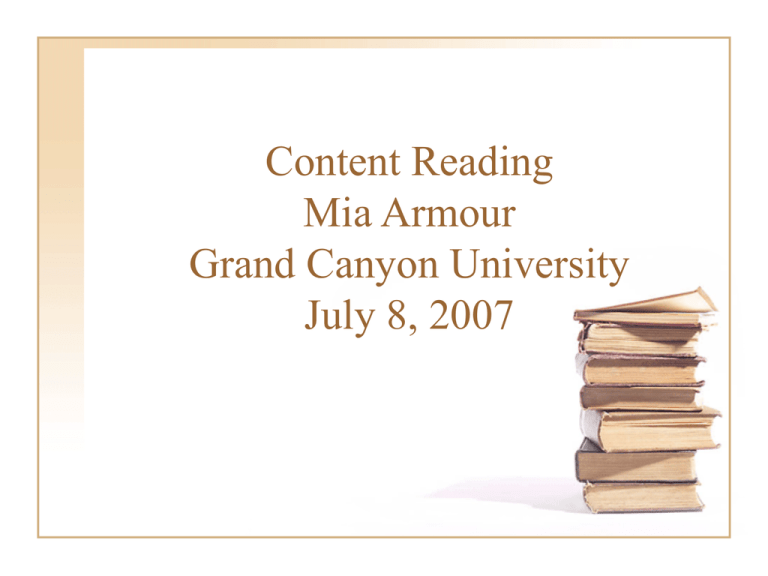
Content Reading Mia Armour Grand Canyon University July 8, 2007 Content Reading Content Area Classroom & Reading • What is a content area classroom? – A classroom where instruction is directed on a specific subject area, such as reading, math, science. Content Area Classroom & Reading • Why is reading critical for content area instruction? – “Reading is a powerful means of communication.”- (Vacca & Vacca, 2008,p.1) – Reading encompasses all subjects, making it impossible for students to learn without the ability to read and comprehend material being read. – It is estimated that once a student leaves high school, 90% of his reading will be to acquire information, 10% for pleasure. Content Area Classroom & Reading • How is reading a part of a content area classroom? – Instructions require students to be competent readers. – Content area classrooms have cognitive academic language. Content Area Classroom & Reading • continued... – Reading involves communication through speaking to develop meaning. – “Language isn’t language unless meaning-making is involved. Oral language without meaning is mere prattle.” (Vacca & Vacca, 2008, p.11) Content Area Classroom & Reading • continued… – Expository text require acute reading and comprehension abilities. • In order to comprehend text successfully, skilled readers must be able to decode and pronounce words quickly and accurately, read with fluency, activate vocabulary knowledge in relation to the language of the text, and put into play text comprehension strategies. • -Vacca & Vacca, 2008, p.13 Content Area Classroom SuccessImportance of Reading • Good pre-reading and writing strategies motivate, stimulate, and accelerate learning. • “Teachers engage students in reading through the use of instructional strategies and discussion-based learning activities.” (Vacca & Vacca, 2008, p.211) Content Area Classroom SuccessImportance of Reading • Prior knowledge in reading is the most important influencing factor. • “Activating prior knowledge and generating interest create an instructional context in which students will read with purpose and anticipation.” (Vacca & Vacca, 2008, p.184) Content Area Classroom SuccessImportance of Reading • Successful reading skills enables students to set goals in their learning. • Learning goals can be developed as students learn more effective reading strategies. Content Area Classroom SuccessImportance of Reading • Reading also enables students to analyze and find purpose. • Students are encouraged “to think aloud as they read, to help the pursue meaning and also to demonstrate how they are processing the information in the text.” (Gillet, 2004, p.45) Content Area Classroom SuccessImportance of Reading • Reading allows students to infer meaning in expository texts. • Expository text are often difficult for students to grasp meaning. Practicing reading and strategies in a content area class, strengthens these skills. Content Area Classroom- Literacy • Literacy should be deliberate. • Teachers should purposely find good rich text that highlights their content area. Content Area Classroom- Literacy • Teachers should have a positive attitude about teaching literature. • “When you combine your knowledge of research with our professional common sense, you will find yourself more engaged in more effective practices.” (Slavin, 2006, p.15) Content Area Classroom- Literacy • Content instruction should be studied and known well by the teacher. • Intentional teachers are thoughtful. When they take action, they are purposeful and think about why they do what they do.” (Slavin, 2006, p.15) Content Area Classroom- Literacy • Well written text should be chosen in the content of the class. • “The way in which information is organized in text makes a difference in the way we understand and use the information. Good readers recognize and correctly respond to different arrangements in text.” (Gillet, 2006, p.340) Content Area Classroom- Literacy • Text should be interesting to students. • If text are interesting the students will consume more and be introduced to thousands of words of vocabulary in one school year. This will equip them to expand their vocabulary. Content Area ClassroomCharacteristics of Comprehension and Scaffolding • Good readers should look over text before they read, noting structure to gain comprehension. • “When students preview a reading selection, they do not begin to read it; they scan each page, looking at illustrations and text features such as boldface print and heading.” (Gillet, 2006, p.295) Content Area ClassroomCharacteristics of Comprehension and Scaffolding • Accurate recognition of more than 90% of the words in running text is necessary for effective instructional-level reading. • “Try to determine the meaning of unfamiliar words and concepts in the text.” (Vacca & Vacca, 2008, p.16) Content Area ClassroomCharacteristics of Comprehension and Scaffolding • “Students should be let to think about text before, during and after reading.” (Vacca & Vacca, 2008,p.16) • When we can somehow relate what we red to our prior knowledge, we understand and remember more clearly.” (Gillet, 2004, p.293) Content Area ClassroomCharacteristics of Comprehension and Scaffolding • Instructional scaffolding is the provision of sufficient supports to promote learning when concepts and skills are being first introduced to students. These supports may include – – – – Resources A compelling task Templates and guides Guidance on the development of cognitive and social skills Content Area ClassroomCharacteristics of Comprehension and Scaffolding • When teachers scaffold they introduce concepts such as – Modeling – Challenging – Praise – Background Knowledge – Group Discussion – Semantic Mapping – Vocabulary Development References Gillet, J.W., Crawford, A.N., & Temple, Charles. (2004). Understanding Reading Problems Assessment and Instruction. New York: Pearson Allyn and Bacon Grand Canyon University. (2005). Reading 583 Lecture One. Phoenix, AZ. Grand Canyon University. North Central Regional Educational Laboratory. (n.d.) Scaffolding retrieved July 8, 2007 from http://www.ncrel.org/sdrs/areas/issues/students/learning/lr1scaf.htm Slavin, R. E. (2006). Educational Psychology. (7th ed.) Boston: Allyn & Bacon. Texas Center for Reading and Language Arts (TCRLA). (2002). Enhancing Learning Through Reading and Writing Strategies in the Content Areas retrieved July 7, 2007 from http://www.texasreading.org/downloads/special_ed/SEDsecondaryoriginal/2002_Content AreasOriginal.pdf Vacca J. & Vacca R. (2008). Content Area Reading Literacy and Learning Across the Curriculum. Boston: Allyn & Bacon. Wikipedia. (2007). Instructional Scaffolding retrieved July 8, 2007 from http://en.wikipedia.org/wiki/Instructional_scaffolding
